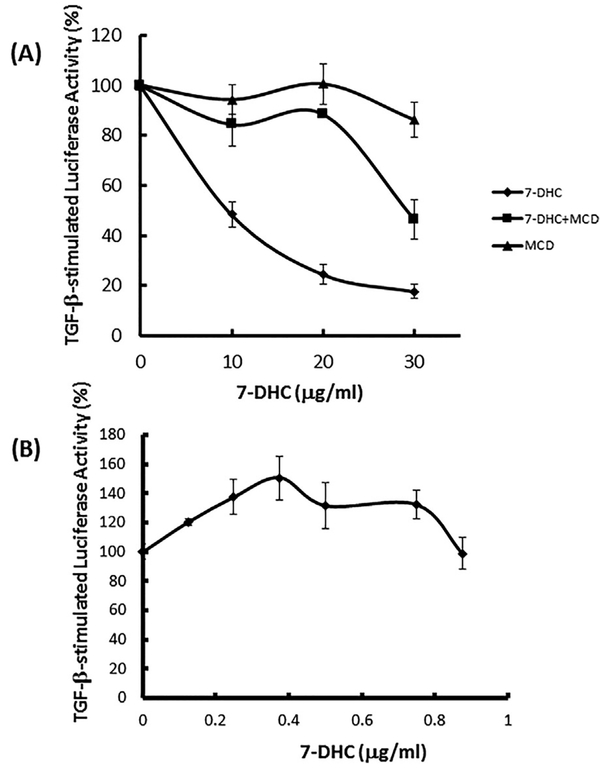Fig. 3.
Reversal of 7-DHC-suppressed TGF-β-stimulated luciferase activity by MβCD (MCD) (A) and enhancement of TGF-β-stimulated luciferase activity by low concentrations of 7-DHC (B) in Mv1Lu cells. (A) Cells were pre-treated with several concentrations (0, 10, 20, and 30 μg/ml) of 7-DHC at 37°C for 1 h (allowing integration of 7-DHC into the plasma membrane to form lipid rafts/caveolae), then treated with 100 pM TGF-β in the presence (7-DHC þ MCD) and absence (7-DHC alone) of several concentrations (0, 5, 10, and 15 μg/ml) of MCD at 37°C for an additional 5 h. In a control experiment (MCD alone), cells were treated with vehicle only at 37°C for 1 h and then treated with 100 pM TGF-β in the presence of several concentrations (0, 5, 10, and 15 μg/ml) of MCD at 37°C for an additional 5 h. TGF-β-stimulated luciferase activity of these treated cells was determined. The TGF-β-stimulated luciferase activity was taken as 100% in cells treated with TGF-β alone. The experiments were performed in triplicate. The data are mean ± s.d. (B) Cells were treated with 100 pM TGF-b in the presence of several concentrations (0, 0.125, 0.25, 0.5, 0.75, and 0.875 μg/ml) of 7-DHC at 37°C. After 5 h, TGF-β-stimulated luciferase activity of lysates of treated cells was determined. The TGF-β-stimulated luciferase activity was taken as 100% in cells treated with TGF-β alone. The experiments were performed in triplicate. The data are mean ± s.d.

